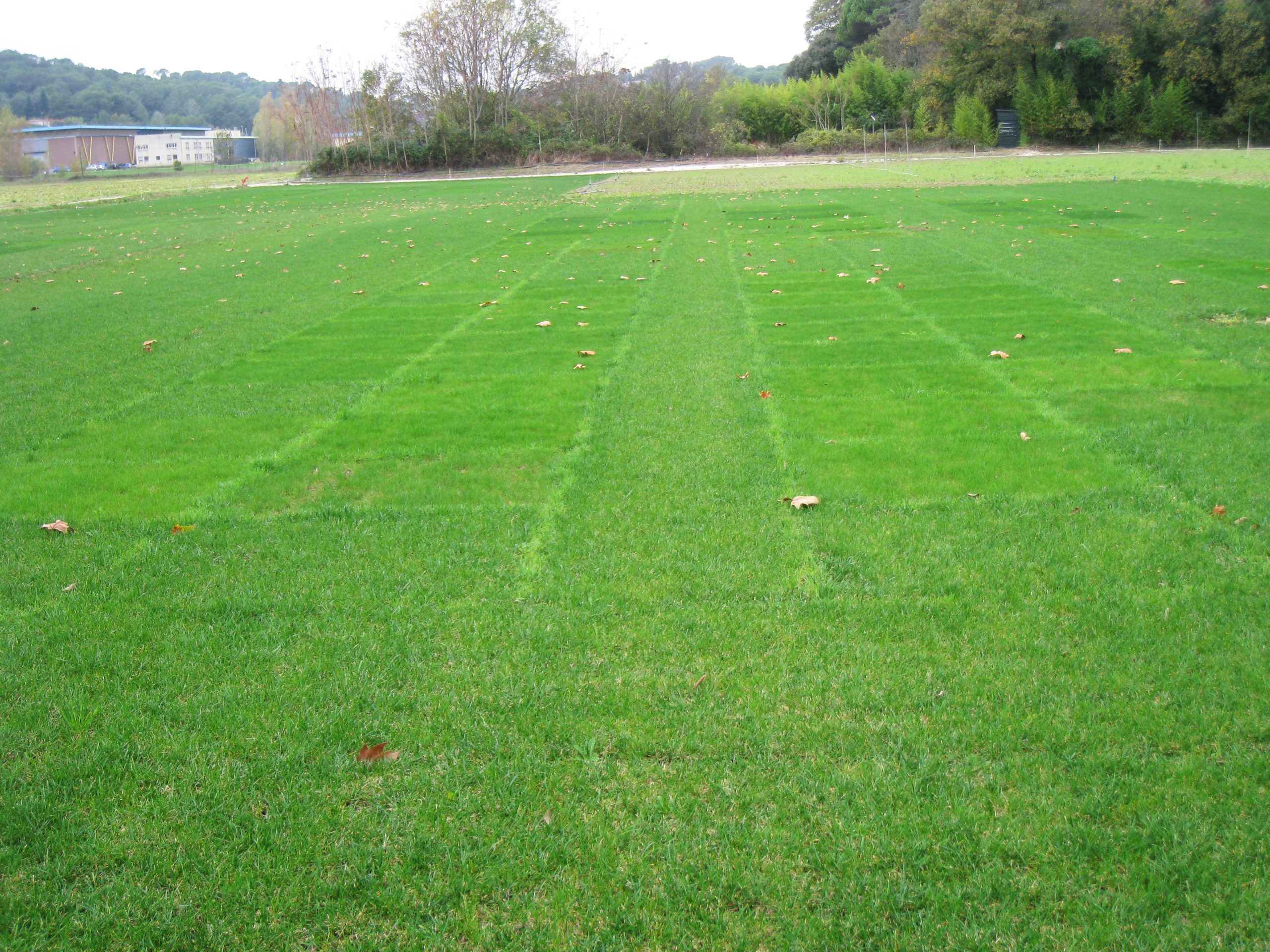Registration of grass varieties in the French Catalogue
Before a new variety can be placed on the market in France, it must be registered in the Official French Catalogue of species and varieties, also known as the National Listing. The registration of a variety is decided by the Ministry of Agriculture based on proposals from the French Technical Committee for Plant Breeding (CTPS). These proposals are obtained on the basis of studies carried out by GEVES for the CTPS.
Why choose grass varieties that are registered in the Catalogue?
For more than twenty years, the VCUS trial protocol for registering grass varieties in the Official Catalogue has prohibited fungicides and insecticides, unless special permission has been granted. What better way to evaluate disease resistance! Moreover, the diversity of testing sites within the CTPS network, including locations across Europe, provides precise information for a large array of diseases.
A variety’s capacity to go without weeding is evaluated through its ratings for establishment, density and global aesthetic appearance: a dense and healthy variety does not need to be weeded. There are significant differences between varieties depending on what they will be used for. Certain varieties will be more resistant to wear and tear, an essential quality for football pitches, for example.

In 2015, a new criterion was incorporated to estimate grass growth rates, which indicate how often the grass will need to be mowed. This criterion resulted in a study being carried out from 2011-2012 to measure the difference in mowing waste levels between old and new varieties. The results showed that waste levels had halved from 6.1 t/ha to 3.7 t/ha in tall fescue grass, with similar findings for perennial ray-grass – the two main turf grass species. With the use of pesticides soon prohibited by new French legislation known as the “Labbé law”, which will enter into force in 2020, it is ever important to choose high-quality varieties. A lower-end variety will be sparse and susceptible to disease.
Assessment and registration of grasses in the Catalogue
In 2017, 222 varieties from 13 turf grass species were registered in the Official French Catalogue in List A (and List B for seed export outside of the EU):


To be registered, a variety must have a name, be distinct, uniform and stable (DUS) and offer an improvement over existing well-known varieties for specific criteria (VCUS). The criteria studied for VCUS assessment are: establishment, resistance to wear and tear, leaf color and fineness, grass density, slow growth, durability, and global aesthetic quality. The rules can be found in the technical regulations. The variety is grown, observed and assessed for three years in the national CTPS trial network, which is coordinated by GEVES. This network includes 12 locations, 6 in France and 6 in other European countries which are representative of French climate conditions, excluding Norway which is essentially used to understand the behavior of varieties to winter fusarium:
Publication of results
All test results are published on the website choixdugazon.org, and its English version turfgrass-list.org for other European countries.

To find out more
- Register a variety in the French Catalogue
- Search the Catalogue
- Search for a document (protocols, technical regulations…)
